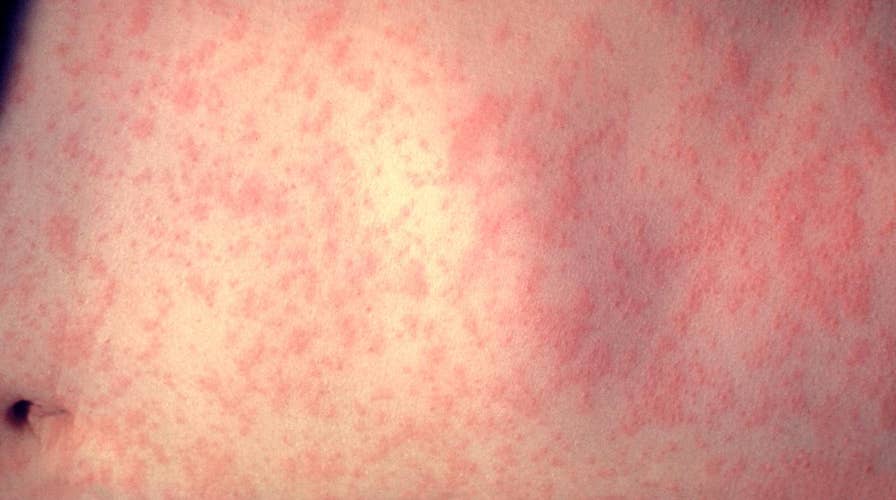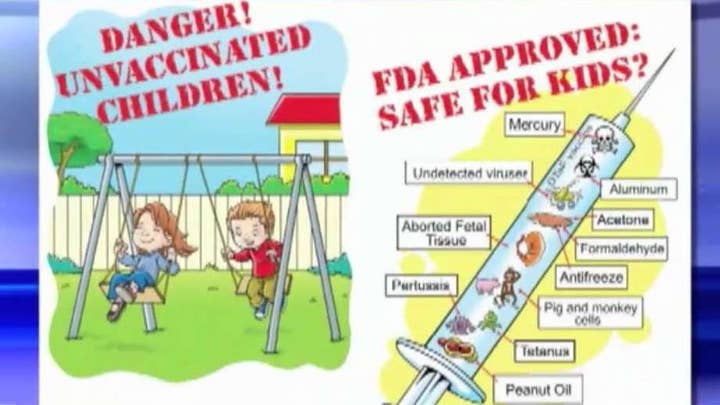Measles outbreaks could be more commonplace in Texas communities as an increasing number of children in the state show up to school unvaccinated, a new study claims.
The study, based on a computer simulation by researchers at the University of Pittsburgh Graduate School of Public Health, shows that "an additional 5 percent decrease in vaccination rates, which have been on a downward trend since 2003, would increase the size of a potential measles outbreak by up to 4,000 percent in some [Texas] communities,” researchers said in a news release regarding the findings, which were published Wednesday in the journal JAMA Network Open.
Texas, according to researchers, is the “largest state by population” that allows parents to not vaccinate their children for personal or religious reasons. And the number of exemptions has increased in recent years, growing from 2,300 in 2013 to 64,000 in 2016.
LAS VEGAS STRIP VISITORS WARNED OF POSSIBLE MEASLES EXPOSURE: HEALTH OFFICIALS
"We forecast that a continuous reduction in vaccination rates would exponentially increase possible outbreak sizes,” David Sinclair, one of the study’s lead authors, said in a statement.
Using a computer simulation tool — Framework for Reconstructing Epidemiological Dynamics (FRED) — researchers uploaded vaccination data for both private and public school districts in the state. A single case of measles was then introduced “into various metropolitan areas through a randomly selected student whose parents have refused to vaccinate,” they explained.
“The simulation runs for each city for 270 days — the length of the typical school year — at current vaccination rates and at a hypothetical decrease in those rates,” researchers continued.
At current rates, researchers determined outbreaks involving 400 or more cases could impact some of the state’s biggest cities, such as Dallas and Austin.
“This is partly due to a minority of schools where vaccination rates are less than 92 percent — low enough for measles to sustain transmission,” they said.
A further decrease in vaccination rates could lead to more measles cases, according to the study.
“If the vaccination rate drops 5 [percent] in only the schools with populations that currently are under-vaccinated, the size of potential measles outbreaks climbs exponentially in every metropolitan area, with Dallas-Fort Worth, Austin, and Houston all susceptible to outbreaks of 500 to 1,000 people,” the researchers said.
Measles is a highly contagious disease that can cause fever, cough, rash, and red, watery eyes.
The virus spreads through the air after an infected person coughs or sneezes. Others can contract measles when they breathe the contaminated air or touch a contaminated surface, and then touch their eyes, nose or mouth.
“Infected people can spread measles to others from four days before through four days after the rash appears,” the Centers for Disease Control and Prevention (CDC) says.
MEASLES EXPOSURE AT UNION STATION IN LOS ANGELES CONFIRMED: HEALTH OFFICIALS
The MMR vaccine can protect both individuals and other people from contracting the virus.
Young children are typically most at risk of contracting measles. The CDC recommends children get two doses of the MMR vaccination, but the first dose is typically given to children when they are between 12 and 15 months old, with the second occurring between ages 4 and 6.
“When someone refuses to be vaccinated, they are making a decision that doesn't only impact them. They are increasing the risk that people who are not immune, through no fault of their own, will get very sick and possibly die," Mark Roberts, a senior author on the study, said in a statement.






















